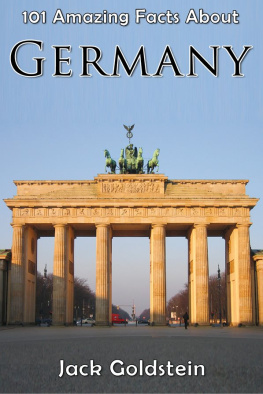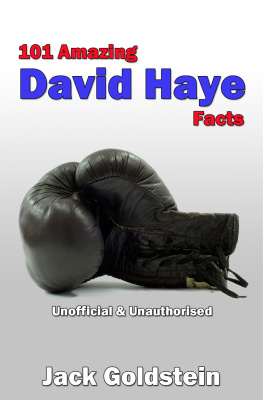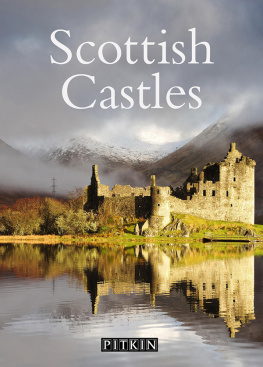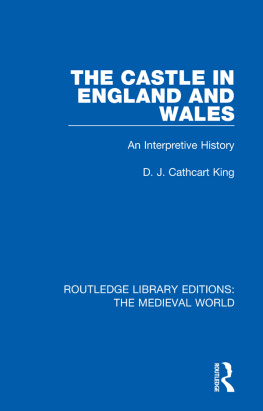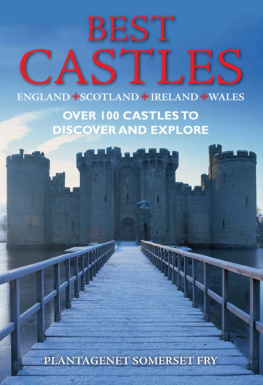Title Page
101 AMAZING FACTS ABOUT CASTLES
Jack Goldstein
Publisher Information
Published in 2014 by
Andrews UK Limited
www.andrewsuk.com
The right of Jack Goldstein to be identified as the author of this work has been asserted by him in accordance with the Copyright, Designs and Patents Act 1998
Copyright 2014 Jack Goldstein
All rights reserved. No part of this publication may be reproduced, stored in a retrieval system, or transmitted, in any form or by any means without the prior written permission of the publisher, nor be otherwise circulated in any form of binding or cover other than that in which it is published and without a similar condition being imposed on the subsequent purchaser. Any person who does so may be liable to criminal prosecution and civil claims for damages.
All information contained within this book has been researched from reputable sources. If any information is found to be false, please contact the publishers, who will be happy to make corrections for future editions.
Chateau Gaillard photo courtesy of Casper Moller
Krak des Chevaliers photo courtesy of Arian Zwegers
Bodiam Castle photo courtesy of Brian Snelson
Malbork Castle photo courtesy of Arian Zwegers
Himeji Castle photo courtesy of alisdair
Portcullis photo courtesy of Kevin King
Introduction
Did you know that the worlds oldest football was found in a room at Stirling Castle? Do you know what the person in charge of a castles buttery is called? What is the difference between a trebuchet and a mangonel? And what is an oubliette? The answers to all of these questions and more can be found in the excellent quick-read guide to castles. Whether youre King Richard the Lionheart himself, or just some unlucky peasant, this book containing over one hundred facts is sure to keep you entertained.
Follow Jack Goldstein on Twitter @GoldsteinBooks
Visit Goldstein Books at www.jackgoldsteinbooks.com
The Basics
- Castles are strong buildings, designed to keep the inhabitants safe from attack.
- They were built by kings and noblemen to be both homes and fortresses.
- The earliest structures that we would today call castles were built around the 9 th or 10 th centuries AD and were often made of wood and earth.
- There were defensive structures built for many years before this, although we refer to them as hill forts ; the key difference is that a castle contained a recognisable household structure, whereas a hill fort was purely built for military purposes.
- As time progressed, castle building became an art form in itself. Perhaps the most significant innovation was the change of building material from wood to stone, although there were many other advances made over the next five hundred years.
- Many castles were built on hilltops, as this provided additional defensive strength.
- Others were built next to rivers, in locations where a large proportion of their walls could be surrounded by water; this was because it was much harder to attack this way than by land.
- The first castles were built in central Europe by noblemen wishing to defend (and sometimes attack) the territory around them.
- Within a few years, the trend for building castles had spread across the whole of Europe and also into the Middle East.
- The Great Age of Castles finally ended when the use of gunpowder became widespread; with new weaponry available, the huge stone structures no longer offered the protection they once had.

Alnwick Castle
Terminology - Part 1
- Battlement - also called crenellation, this was the parapet with openings built on the outer side of a walls upper walkway.
- Drawbridge - a bridge than could be raised or lowered to allow access to the castles gateway across a moat or ditch.
- Dungeon - the castles jail, where any prisoners could be locked up; it would usually be found in one of the towers.
- Gatehouse - built around the entrance to the castle, the gatehouse would be a combination of towers, barriers and bridges.
- Hall - this was the name for the living quarters inside a castle.
- Keep - this was the very centre of the castle, its inner stronghold.
- Moat - a deep ditch filled with water that surrounded the castle.
- Motte - an artificial mound of earth on which a castle would be built.
- Portcullis - this was an iron grill suspended in front of a gateway which offered additional protection to the entrance.
- Turret - often used as a look-out point, this was a small tower built on top of one of the castles main towers.
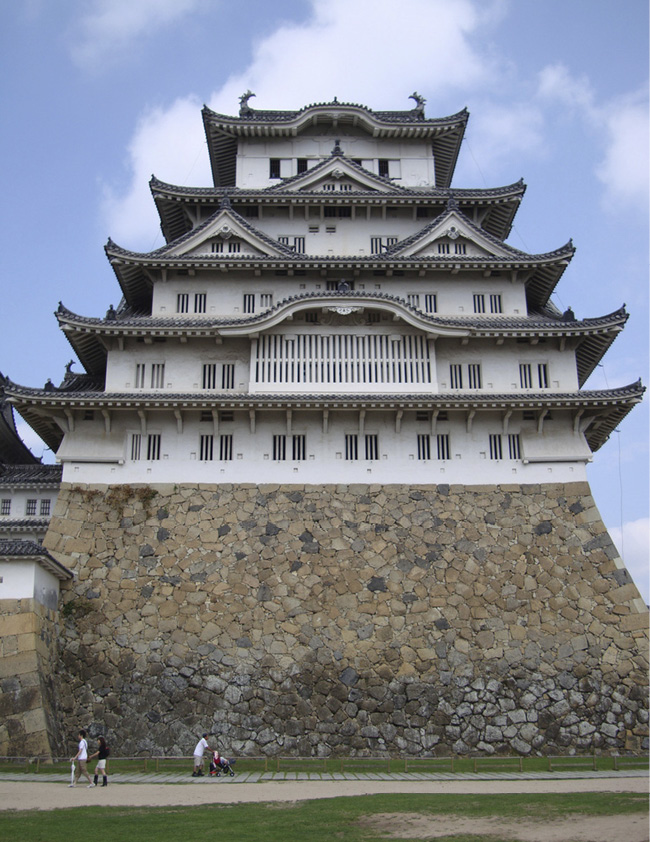
Himeji Castle
Rooms - Part 1
- Pantry - close to the kitchen, this is the room where perishable food produce would be stored.
- Storeroom - usually located over the buttery and pantry , the storeroom would hold non-perishable provisions and cooking utensils.
- Chapel - in medieval castles, chapels were often built on two vertical levels, with the noble folk sitting in the upper part and the commoners in the lower. Prayer was a very important part of the days routine in medieval times, and the chapel was therefore used by all inhabitants of the castle.
- Kitchen - a castles kitchen was very much an important part of the design. The ovens and fireplaces would in fact be built into the walls, and most castles in the great age had a direct water supply leading to the kitchen, as well as drainage taking waste away from it!
- Great Hall - this was the main meeting and dining area of a castle, with the lord and ladys high table erected on a raised plinth, and the commoners seated at lower trestle tables. In early castles, this was also where everyone slept at night!
- Lords & Ladies Chamber - initially this was just a partitioned room at one end of the great hall, however as castles grew in size, the noblemen wished for greater privacy and thus began to build separate bedrooms for themselves.
- Wardrobe - this was the dressing and storage room not just for clothes but also for valuables such as jewels, coins and even plates.
- Minstrels Gallery - although not technically a separate room, the minstrels gallery was a raised platform overlooking the Great Hall on which the musicians and other entertainers were based for their performances.
- Throne Room - in later castles, a throne room was installed so that a king or queen could have an official receiving room when in residence.
- Bathroom - often the wardrobe would also double up as a bathroom (until later larger castles did in fact have separate ones). Here, the lord of the castle would wash himself in a large wooden barrel.
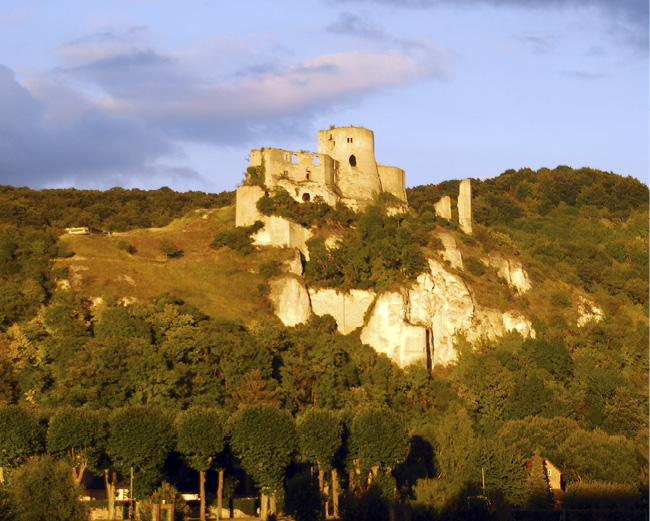
Chteau Gaillard
General Facts
- There are around 1500 castle sites in England. Just over half of these are ruins, three hundred are still standing, but the rest are sadly lost to history.
- For the men-folk of the castle, there were a few things to keep them occupied - weapons training for instance, or hunting (when not at siege of course). Inside however, there wasnt a great deal to do, especially for the women. Some would play chess or other games, whilst others would learn skills such as embroidery.
- Once activity that took place regularly was to feast - and to feast well! Huge banquets would often be held in the great hall, with more food and drink available than most people could stomach. To entertain the diners, the castles lord would employ jesters and minstrels, who would perform throughout.
Next page


